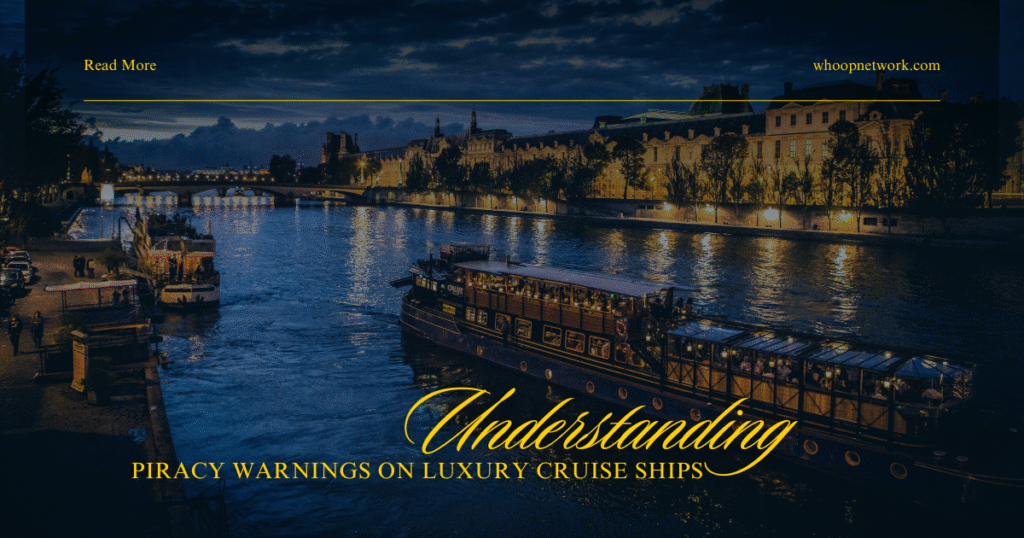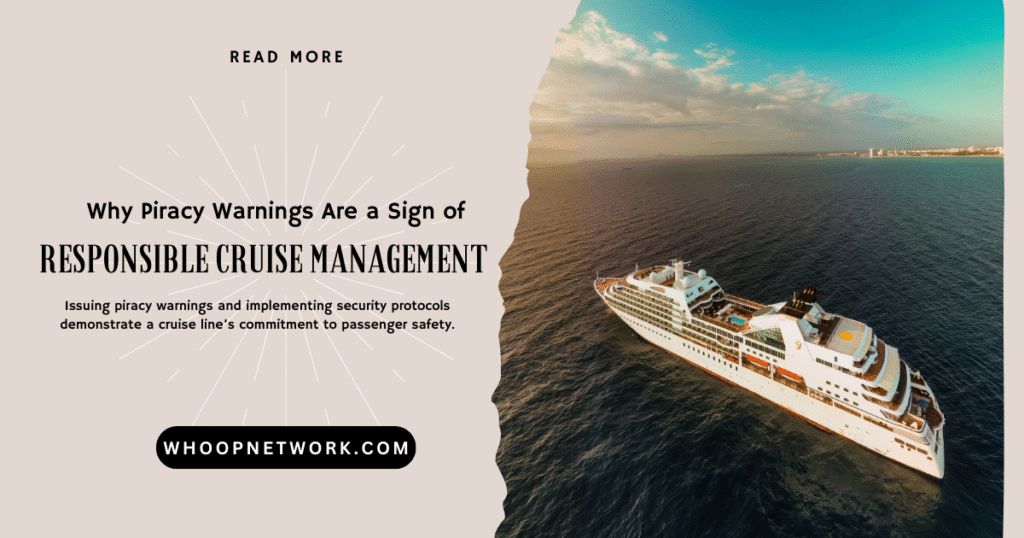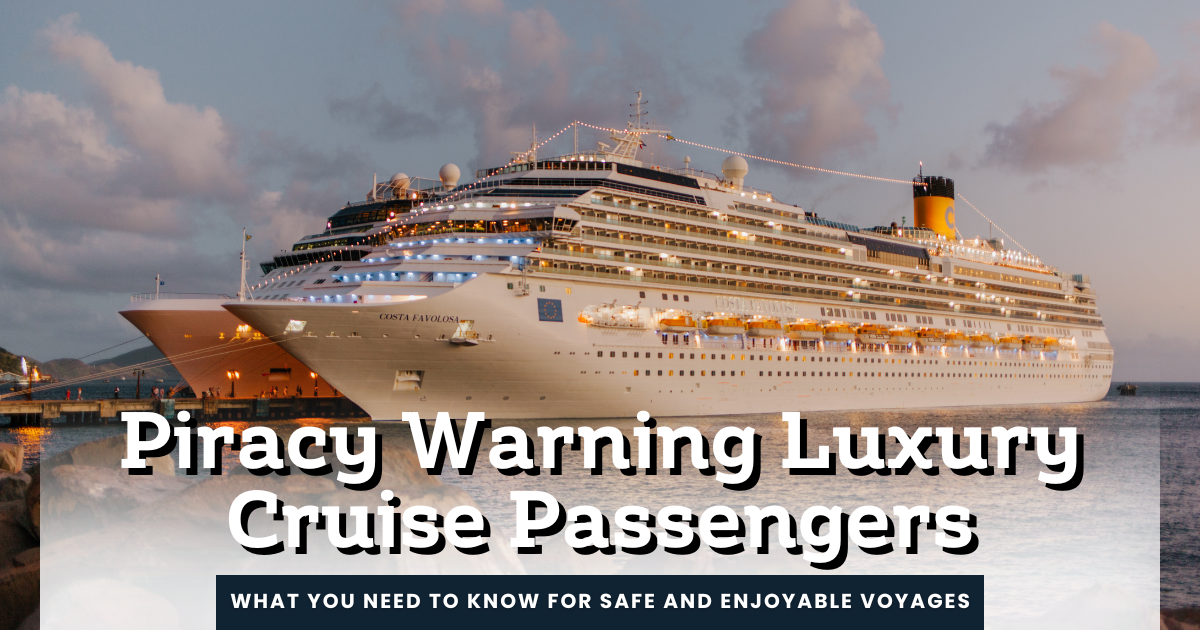Cruising the world’s oceans aboard a luxury cruise ship is often seen as the epitome of relaxation and adventure. However, recent events have highlighted a growing concern for passengers and crew alike: piracy threats in certain maritime regions. This article offers a comprehensive, in-depth guide on piracy warning luxury cruise passengers-what it means, how cruise lines respond, and what passengers should do to stay safe without compromising their travel experience.
Navigating the Reality of Piracy Warnings on Luxury Cruises
Luxury cruise passengers expect comfort, safety, and seamless enjoyment. Yet, when a ship issues a piracy warning, such as the recent alert aboard Cunard’s Queen Anne in 2025, it can cause anxiety and confusion. These warnings are not signs of immediate danger but precautionary measures taken when sailing through piracy-prone waters like the Sulu-Celebes Sea near the Philippines.
This article will explore the nature of these warnings, the security protocols cruise lines implement, real-world examples including the Queen Anne incident, and practical tips for passengers. Whether you are a first-time cruiser or a seasoned traveler, understanding piracy warnings can help you feel informed and confident during your voyage.
Understanding Piracy Warnings on Luxury Cruise Ships

What Is a Piracy Warning?
A piracy warning is an official alert issued by a cruise ship’s captain or crew when navigating through regions known for pirate activity. These warnings are based on maritime intelligence and are part of standard security protocols to minimize risk.
Why Are Luxury Cruise Ships Targeted?
While large cruise ships are less likely to be hijacked due to their size and security measures, pirates may still view them as potential targets for ransom or theft, especially in high-risk areas like parts of Southeast Asia and off the coast of Somalia.
The 2023-2025 Piracy Warning Trend: Case Study of Cunard’s Queen Anne

The Queen Anne Pirate Alert Experience
In March 2025, passengers aboard Cunard’s Queen Anne, a luxury cruise ship on its maiden 111-night world voyage, received a piracy warning while crossing the Sulu-Celebes Sea, a region notorious for piracy threats. The ship’s captain announced a heightened security alert, instructing passengers to:
- Turn off stateroom lights and close curtains to reduce visibility
- Avoid open decks from 9 PM to 5 AM
- Allow only essential deck lights to remain on
- Prepare water cannons to deter any approaching boats
Despite the alarming announcement, the cruise line emphasized that there was no specific threat and that these measures were precautionary. Passengers reported mixed feelings-some found the experience thrilling, others were anxious but reassured by the ship’s safety protocols.
Social Media and Passenger Reactions
Videos of the announcement went viral on platforms like TikTok and Reddit, sparking conversations among cruise enthusiasts and the general public. Many passengers shared their experiences, noting the unusual but effective security measures, such as the ship going nearly dark at night and the crew’s readiness to respond.
How Cruise Lines Protect Passengers from Piracy Threats
Security Measures on Board
- Reduced Lighting and Visibility Controls: Ships dim or turn off external lights and ask passengers to close curtains to avoid detection by pirates at night.
- Restricted Access to Open Decks: Passengers are prohibited from accessing external decks during high-risk hours to ensure safety.
- Water Cannons and Physical Barriers: Ships deploy water cannons-high-pressure hoses-to deter small boats attempting to approach.
- Increased Crew Vigilance and Surveillance: Enhanced watchkeeping and use of radar and binoculars to monitor suspicious vessels.
- Coordination with Naval Forces: Many cruise lines coordinate with international naval patrols in piracy hotspots for added protection.
Passenger Instructions During a Piracy Warning
- Stay inside staterooms, keep curtains closed, and lights off when possible.
- Follow crew instructions promptly and calmly.
- Avoid open decks and public areas during restricted hours.
- Report any suspicious activity to crew members immediately.
Real-World Examples of Piracy Incidents Involving Cruise Ships
While large cruise ships are rarely successfully hijacked, there have been attempts:
- Seabourn Spirit Attack (2005): A luxury cruise ship was attacked off Somalia but successfully repelled pirates with the help of security teams.
- Viking Sky Cruise Ship Incident: Though not a piracy case, the Viking Sky’s engine failure off Norway raised awareness about emergency preparedness on cruise ships8.
- Somali Pirate Attacks: Modern piracy is a well-organized enterprise involving armed groups targeting commercial and passenger vessels, often demanding ransom8.
These incidents underscore the importance of vigilance and preparedness.
Debunking Common Myths About Piracy on Luxury Cruises
| Myth | Reality |
|---|---|
| Pirates frequently hijack cruise ships | Large cruise ships have robust security and are rarely hijacked; warnings are precautionary. |
| Piracy warnings mean immediate danger | Warnings are preventive measures, not indications of active attacks. |
| Passengers should panic during warnings | Calm adherence to crew instructions ensures safety and smooth handling of situations. |
| Pirates are like fictional characters | Modern pirates are often armed, organized criminals, not romanticized figures like “Pirate Hook.” |
Practical Tips for Passengers Facing Piracy Warnings
- Stay Informed: Follow announcements and updates from the cruise line.
- Pack Smart: Bring essentials in your cabin to avoid unnecessary movement during restricted times.
- Use Binoculars: If allowed, watch the horizon from safe areas during daylight to feel engaged and alert.
- Stay Calm and Composed: Trust the ship’s security protocols and crew training.
- Engage with Crew: Ask questions to understand safety measures better and reduce anxiety.
Why Piracy Warnings Are a Sign of Responsible Cruise Management

Issuing piracy warnings and implementing security protocols demonstrate a cruise line’s commitment to passenger safety. These measures are based on thorough risk assessments and international maritime security guidelines. Passengers benefit from transparent communication and visible preparedness, which help maintain trust and confidence in the cruise experience.
Conclusion
Piracy warnings for luxury cruise passengers, such as those experienced on Cunard’s Queen Anne in 2025, are precautionary steps designed to protect lives and property. By understanding the nature of these warnings, the security measures involved, and how to respond effectively, passengers can navigate these situations calmly and confidently.
Luxury cruises remain one of the safest and most enjoyable ways to explore the world’s oceans. Awareness and cooperation with crew instructions ensure that piracy warnings do not disrupt your journey but rather enhance your safety.
FAQs
Q: What does a piracy warning on a luxury cruise ship mean?
Ans: It means the ship is sailing through an area known for pirate activity and is taking extra security precautions to minimize risk. There is usually no immediate threat.
Q: Are piracy warnings common on luxury cruises?
Ans: They are relatively rare but do occur when ships pass through high-risk regions like the Sulu-Celebes Sea or off the coast of Somalia.
Q: What should passengers do during a piracy warning?
Ans: Passengers should follow crew instructions, turn off lights, close curtains, avoid open decks during restricted hours, and stay calm.
Q: Has any luxury cruise ship ever been hijacked by pirates?
Ans: Successful hijacking of large luxury cruise ships is extremely rare due to their size and security. There have been attempted attacks, but ships typically repel pirates.
Q: How do cruise ships protect themselves from pirates?
Ans: Ships use reduced lighting, water cannons, restricted deck access, enhanced surveillance, and coordinate with naval forces to deter pirate attacks.
Q: Is it safe to travel on cruises that pass through piracy-prone areas?
Ans: Yes. Cruise lines implement stringent safety protocols, and incidents are rare. Passengers should stay informed and follow safety instructions.
Q: Where can I find real passenger experiences about piracy warnings?
Ans: Platforms like Reddit and TikTok have firsthand accounts and discussions from passengers who experienced piracy warnings on ships like the Queen Anne.
